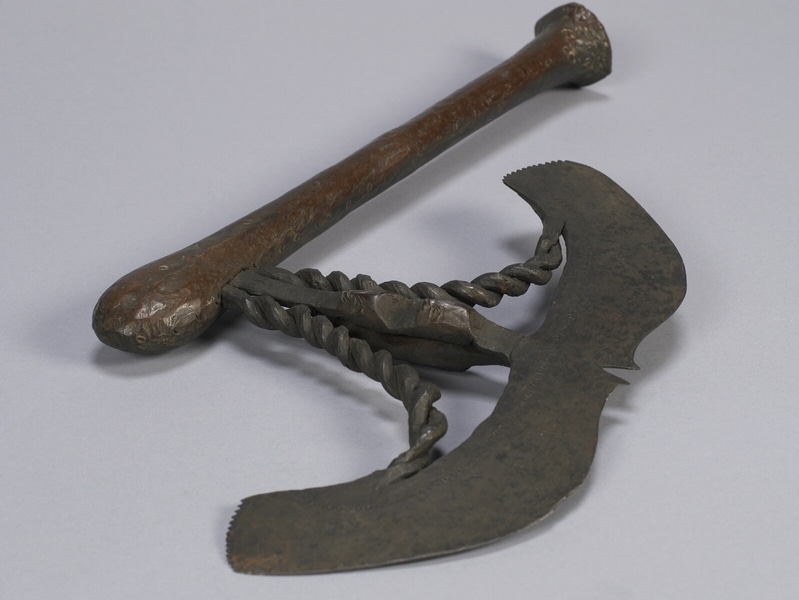Axe Item Number: K4.24 from the MOA: University of British Columbia


Description
Axe composed of a wooden handle covered in copper with a rounded top end and a flaring butt end, a blade with two curves emerging from two small peaks at the centre of the blade and each ending in a serrated edge, and three arms that support the blade. The two outer arms are made of twisted metal, and the centre arm has two low relief faces on each side. The blade is decorated with a line of dots along the inner edge.
History Of Use
Large, elaborately decorated axes are a status symbol for high-ranking men in several communities in central Africa, including the Kuba, Luba, and Songye. Their status is derived from the value placed on ironworking. It was a culturally important practice because of the plentiful iron ore deposits available in the region.
Cultural Context
ceremonial
Iconographic Meaning
The faces decorating the central arm of the axe blade may have been meant to represent the peoples subjugated or conquered by the wielder. The use of copper on the handle is also a sign of wealth, as copper was rarely accessible until the modern era.
Item History
- Made in Democratic Republic of the Congo
- Owned by British Museum before August 1960
- Received from British Museum (Exchanger) during August 1960
What
- Name
- Axe
- Identification Number
- K4.24
- Type of Item
- axe
- Material
- wood, copper metal and steel metal
- Manufacturing Technique
- forged and stamped
- Overall
- height 41.2 cm, width 21.0 cm, depth 4.5 cm
Who
- Culture
- Kuba
- Previous Owner
- British Museum
- Received from
- British Museum (Exchanger)
Where
- Holding Institution
- MOA: University of British Columbia
- Made in
- Democratic Republic of the Congo
When
- Ownership Date
- before August 1960
- Acquisition Date
- during August 1960
Other
- Condition
- fair
- Accession Number
- 0022/0010 a